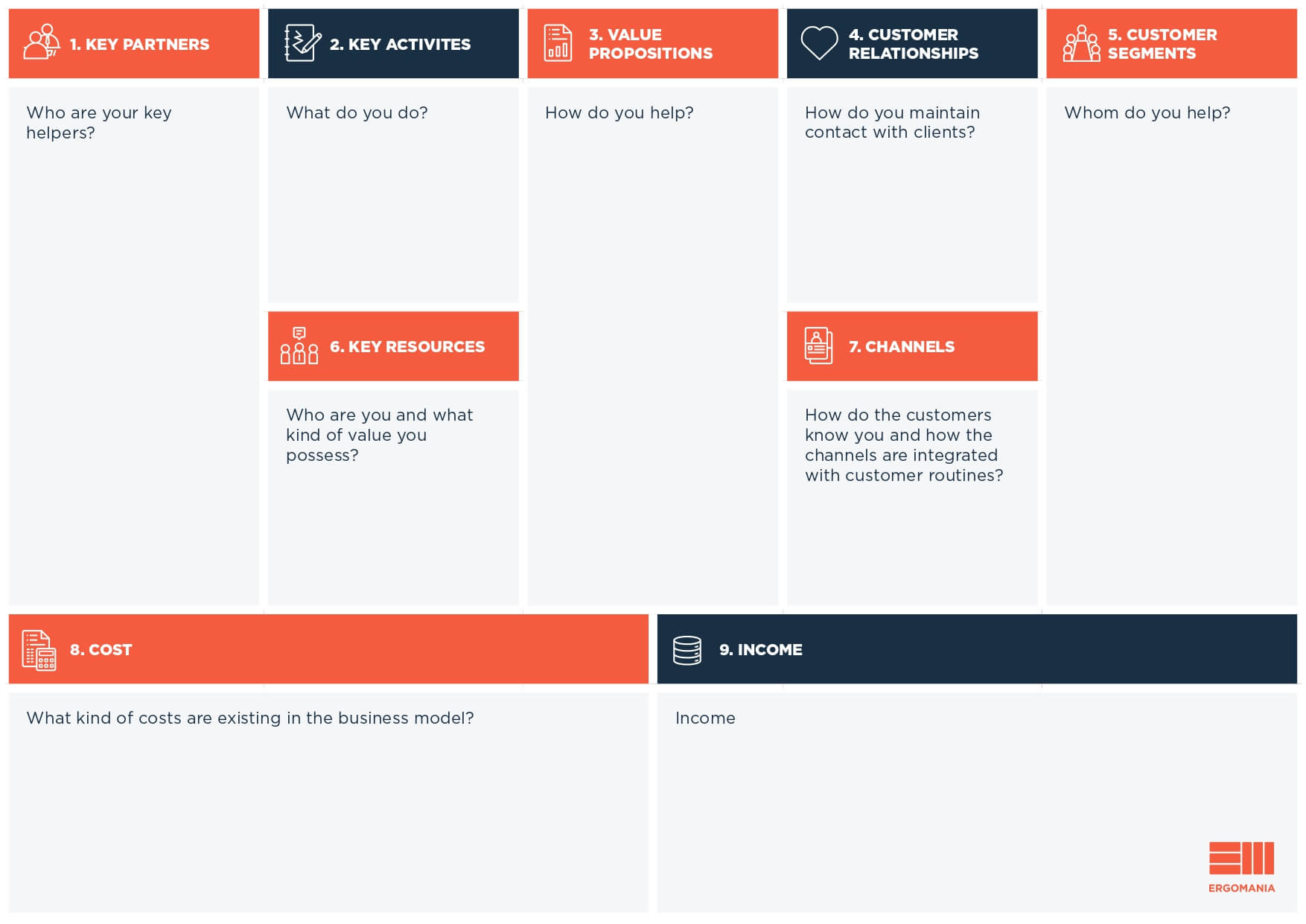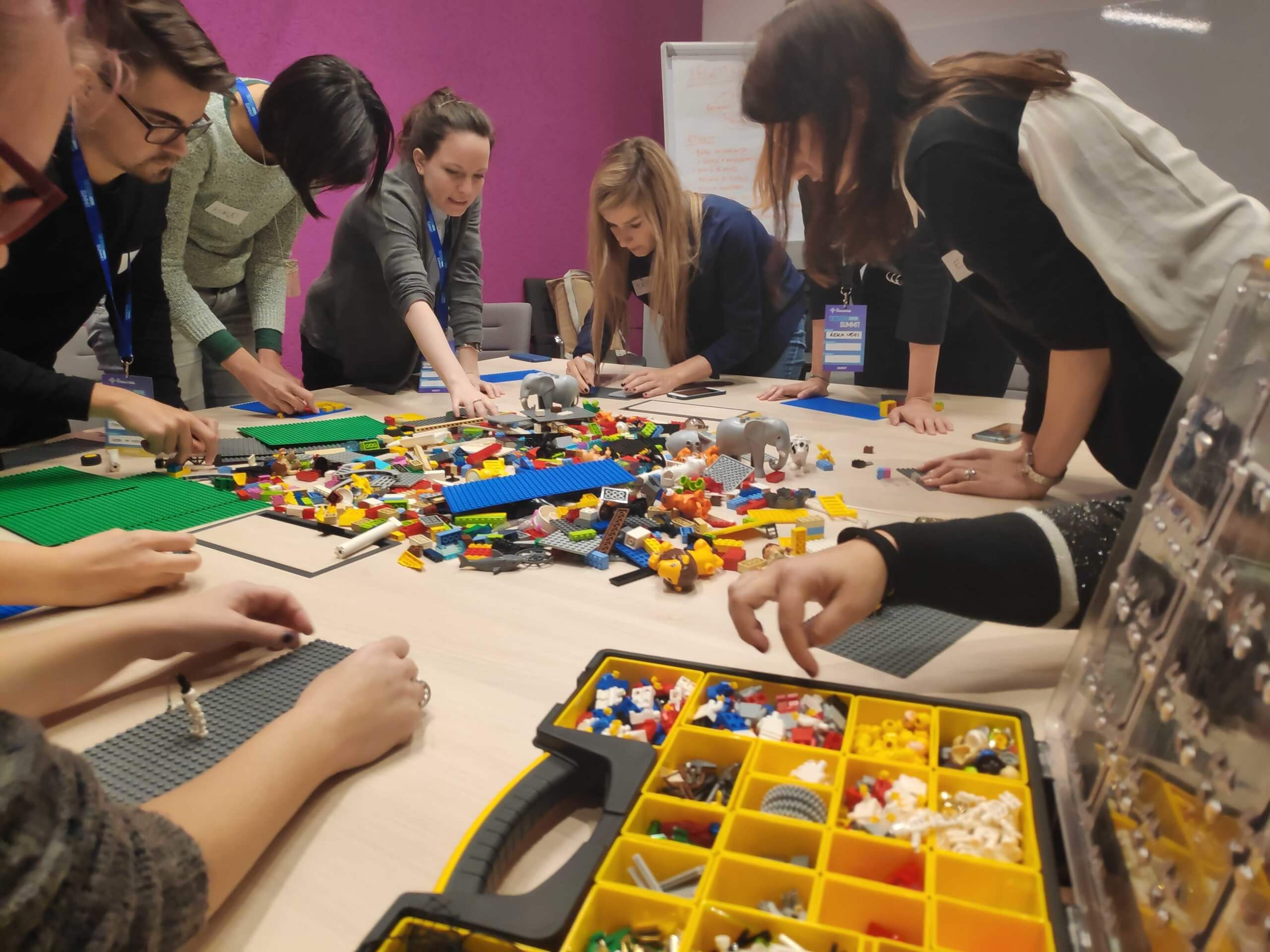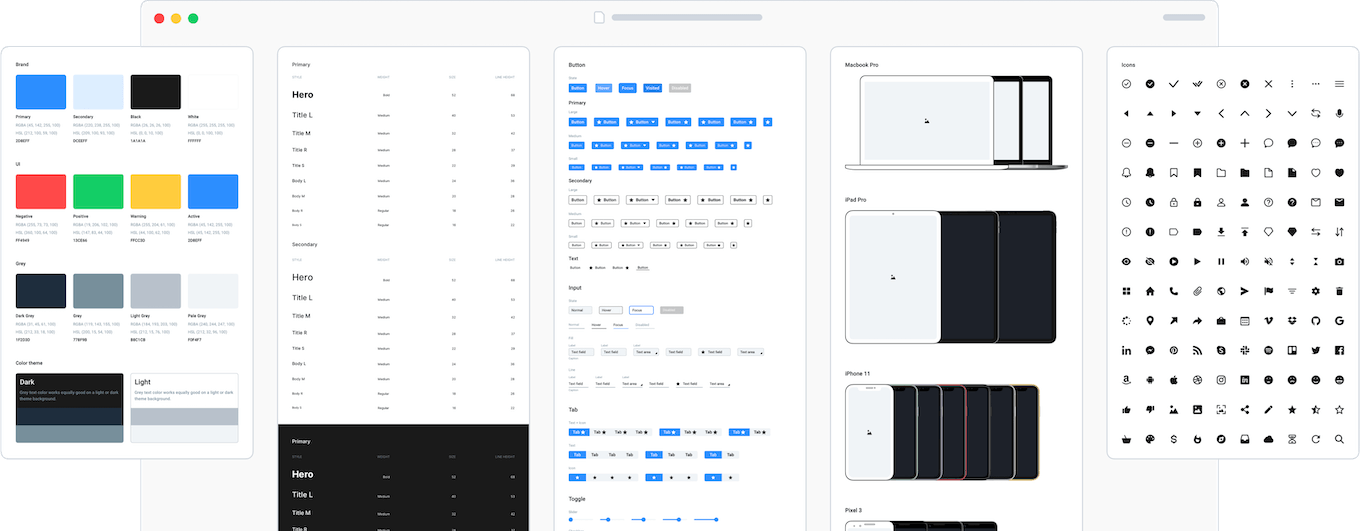Jobs to be done get done using the Value Proposition Canvas
The Business Canvas model was first proposed by the Swiss entrepreneur, Alexander Osterwalder, around 2005. He’s also the lead author of Business Model Generation which has sold more than a million copies, as well as a series of Strategyzer books. So clearly he’s onto something, but what exactly is a Business Model Canvas?
Well, it’s a way of clearly and simply visualizing complex business issues, and doing this collaboratively. Typically a canvas will consist of nine building blocks which can be applied to any business, so that using a design template, an enterprise can easily describe its business model. Over time, there have been more niche templates developed, but the method is always the same: To follow a process which results in a clearer business offering.

So far, so good, but a downside of this methodology is that because it seems so simple, it can sometimes be used in a patchy and ad hoc way, without proper understanding. While companies can be assisted by seeing potential alignment of activities, and understanding pain points and gains, often the process is not applied with enough rigor or in-depth understanding.
A leading Business Canvas advocate
Budapest-based UX-UI design firm Ergomania has long been an advocate of the use of Business Canvases, and in particular the Value Proposition Canvas, focused on how to serve customers better. But ‘serving customers better’ is a broad description, so the Value Proposition has to provide clear and measurable benefits: What will customers actually get from a company when engaging with their product? As a strategic business company, Ergomania constantly works to fully understand business needs and direction, and how these must be harmonized with user needs. In short, Ergomania acts as the bridge, joining the two worlds of business and customers, and advocating for discovery of the Value Proposition at the core of every offering. That Value Proposition is what is being promised as a deliverable, communicated and acknowledged, and the same back from the customer, with their expectation of the value which will be delivered, and experienced. There’s a lot of transactional work going on there, most of it ‘under the radar’. It’s the job of Ergomania to bring to light all the points of intersection between company and customer, including the gain, pain and pinch points which may occur.
So if you happen to think that UX-UI design is simply about creating cool wireframes and pretty designs, think again. Ergomania participates with clients from the very first steps, to create rock solid, excellent products.
In developing any application to serve both a company and its users in the most effective way, UX and Service Design have to be engaged from very early on. The Value Proposition approach as practiced by Ergomania is essential in clarifying all the issues around a company, and the creation of a new product.
Business Canvas box by box: Infrastructure
The nine sections of the Business Canvas proposed by Osterwalder comprehensively describe business practices, and how these interrelate. As a refresher, let’s step through these, starting with the factors which describe the Infrastructure of a business. These include Key Activities, which are the most important actions involved in executing a company’s Value Proposition. For example, a manufacturing organization must have the resources and means to produce products in sufficient quantity and quality to satisfy demand.
Key Resources are everything needed to create value for the customer. Simply making a product or service available is never enough. Key resources support the business, and can take many forms. Human resources play a vital part, providing advice and development, as well as problem handling and solving. The financial structure of a business is also a key resource, as are intellectual assets and branding, as customers need to respect and trust the company they are doing business with.
Very few businesses are able to ‘do everything’. There will usually be add-ons from other partners, for the supply of materials, or delivery of orders. The infrastructure box for the Key Partner Network is therefore another consideration in the Business Canvas model. Your core business can be well-managed and robust, with a brilliant product or service offering, but non-optimal supplier relationships can seriously compromise success. So to avoid the ‘do everything’ approach and optimize operations, companies must look after supplier relationships, to ensure better focus on the core activity.

Business Canvas: The offering
The next section of the Business Canvas model is about the Offering, and here the Value Proposition comes into play. This is the products or services a company offers to its customers. More precisely, the Value Proposition must meet the needs of customers. A Value Proposition which fails to meet customer needs is clearly pointless, while one which does meet needs will be distinguished from the competition. The Value Proposition encompasses many different factors, such as innovation, performance, design, price, convenience and usability. As we’ll see, these and other Value Proposition factors are at the heart of UX-UI design workshops, and are therefore key to Ergomania’s use of the Business Canvas approach.
Any company must also identify which customers and market it intends to serve, so the Customer Segment is an essential part of the matrix. Just as a company cannot ‘do everything’ and must have suppliers, it cannot ‘be everything’ to customers. There is no such thing as a ‘one size fits all’ offering, for any business, ever. Knowing the nature of the type of customer being addressed, even if it is Mass market, is vital. More likely the market will be Niche, and defining an offering according to its niche can bring huge advantages. Why attempt to talk to millions of disinterested customers, when you can focus on the relatively few who will be avidly interested in your product or service?
When the Value Proposition is clearly defined for targeted customers, it’s then possible to show what differentiates the product or service from all others – something we’ll be returning to. With the Value Proposition in place it’s now possible to examine the Channels through which communication takes place. Channels are any form by which customers are reached, such as a physical store, online, or through partner organizations. The point here is to demonstrate the Value Proposition as cost-effectively and efficiently as possible, by utilizing the most appropriate channels.
This in turn means developing strong Customer Relationships. A customer is never good for just one transaction, so the relationship must be grown, and maintained. And just as ‘one size fits all’ cannot be applied to customer segments, neither can it be to relationships. The right channels must be used to connect with the right customers, in the right way. For example, the home furnishings store IKEA has a clear and highly developed concept of self-service and self-assembly, which is understood and accepted by the customer base. The same criteria would not be shared by Ferrari customers.
Business Canvas: The financials
The final two ‘boxes’ defined by Osterwalder in the Business Canvas model are to do with financial details, starting with the Cost Structure and a thorough examination of all the costs within a business. These will include fixed and variable costs, as well as economies of scale, and whether the organization is cost-driven or value-driven. (Think different food and drink products and examine whether they are sold at a price point, or on attributes of ‘quality’).
Finally, there is the subject of Revenue Streams and how a company monetizes its offering. Lease, sell, license, or a subscription approach? All have Pros and Cons, depending on the market segments which have been identified, the Channels which are utilized, and the way Relationships are built.
How Ergomania employs the Business Canvas methodology
So that’s Business Canvas 101, and there is a great deal more to be said about the subject, and a wealth of material available online, but let’s return to UX-UI Design, and how Ergomania employs the Business Canvas model. Without diminishing the importance of all of the other ‘boxes’, the area of most focus is on the Value Proposition, and how this meets the needs of customers. After all, that in essence is what UX-UI Design is.
Without clearly understanding what a user’s jobs are, including typical tasks, motivation, pains, gains and how to provide the right answers to these, it’s impossible to create a great product. This knowledge is essential in the UX concepting phase, which Ergomania describes as ‘Discovery and Define’ to frame good functions and processes. So the Value Proposition canvas should be a standard tool for every UX project to respond to real problems and support real user tasks. There must be a fit between the product service idea, and the market.
The Value Proposition Canvas consists of two sides: one which represents the customer viewpoint, including their pains, their gains, and their ‘jobs’ – the things they must achieve in order to be effective.
In this box the mission is to get to know the customer extremely well, through a variety of tools. Very often customers make decisions very quickly and in an ‘intuitive’ way about what they like or don’t like. The way we all land on a website, and then quickly scoot onwards if it doesn’t grab us within 5 to 10 seconds is typical of this. Usually we can’t even explain why we stayed or moved on, but in terms of understanding customer motivation, these are exactly the questions which must be answered in the customer half of the Value Proposition Canvas.
On the other side of the canvas are the corresponding offerings of the business, which must match the customer profile. In a mirroring of Customer Jobs, there are the Services or Products offered by the company. Clearly for a Customer looking for Fintech services, for example, these must be available in the Value Proposition.
The Business side of the canvas also features Gain Creators, which match the needs of the customer to make gains. ‘Gains’ are the attributes which are more than the customer is expecting, and which might include social benefits or increased functionality. Each new edition of a mobile phone normally comes packed with Gain Creators. The customer hadn’t asked for them specifically, but is delighted to find that they can now use voice recognition, or new navigation features, or a translation app.
And on the other side of the equation, the company’s Value Proposition must offer Pain Relief for all the pains the customer experiences. These can be as subjective as the Gains which they perceive as delightful, but anyone who has ever shouted at their computer when it starts to refresh itself, seemingly at random, will know the kind of pinch point requiring pain relief. The Value Proposition must answer these pain points, because even if they are ‘not real’ to the company, they are to the customer.
With Ergomania, Service Dominant Logic states that value creation must happen with the customer, and indeed can only happen through customer cooperation.
Some tools from the locker
A useful ingredient to encourage and develop customer cooperation is Lego Serious Play, a tool long employed by Ergomania to help explore and visualize Value Proposition methodology. The process involves directed play with a group of coworkers, using, yes you guessed it! – plastic Lego bricks. It’s a lot of fun, but more importantly it cuts through potential misunderstandings and quickly reaches harmonized results.

Another tool in the locker is Ethnographic Research, which is where Ergomania’s observers study participants in their ‘real-life’ environment, to see how they interact with a product or service in actuality. It’s one thing to say, “This is how you’re supposed to use this device,” and quite another how people really approach a piece of technology. Recent research into why gamers invert their controls is an example of this, where users are clearly ‘misusing’ devices, based on personal preferences and experience. Speaking of which, have you noticed how increasing numbers of people hold their phones horizontally when making voice calls and talk into the ‘edge’ of their device? As far as the designers are concerned, these people are ‘doing it wrong’, but nevertheless, they’re doing it.
Discovering personal preferences and what users think about a site, app or process also comes from conducting User Interviews. Focus Groups give one type of valuable, general feedback, but User Interviews provide more specific suggestions, based on personas, journey maps and other guided techniques. In User Interviews it’s possible to discover what Jobs customers do in ‘real life’ – this being from the customer side of the Value Proposition canvas. Jobs can be highly defined tasks, right through to aspirational or wish-list activities, but in User Interviews it’s possible to deep dive into what users are looking to achieve.
This is where the Pain and pinch points also become apparent, these being the things which stop the goals being achieved. And there’s the other side of the equation too, of the Gains which leave them feeling excited, satisfied… and wanting to do the Job again.
The goal of Ethnographic Research, Focus Groups and User Interviews is always to find the reality of how users interface with products and services – not as they ‘should’, but as they do.
Subjective or objective?
But do such techniques merely result in a mass of highly subjective data? One person ‘likes’ an app, another person ‘dislikes’ it? This is where Objectives and Key Results can be deployed, where specific measures are used to track the achievement of a goal. While Key Performance Indicators are used to evaluate the success of a particular activity in an organization – such as production performance – OKRs are more focused on alignment and engagement. As such, a combined KPI / OKR suite offers powerful metrics to assess the likely success of an initiative, be it a new app, website, or other service. One of the performance management tools employed by Ergomania to keep teams united and motivated is Miro, which is particularly suited to our current world of remote working and distributed teams. The good thing is that Ergomania’s long familiarity with distance and nearshore working is not newly acquired in the pandemic – these are fundamentals which have been in place for many years.

UX for the Fintech arena
So what does the UX-UI Agency’s use of Business Canvas methodology and the host of associated tools bring to the Fintech arena? This is Ergomania’s specialist area of expertise, working across Europe and parts of Africa, with companies ranging from startups, through unicorns, to multinational banks. The beauty of the Business Canvas approach is that it can be applied to all organizations. Just because a large company is complex doesn’t mean that its processes can’t be reduced to simple, clear steps and stages. In fact the aim is to produce, not multi-page reports, but a single sheet which encapsulates all the key points. With that in hand, everyone in a company can then clearly pursue the same Business Direction both in the short and long term, with a clear path to get there.
Sounds easy? Well, yes and no. It’s partly down to that ad hoc approach mentioned earlier, where companies and their agencies tend to cherry pick the least-contentious parts of the Business Canvas, often in an attempt to relieve pain and pinch points. In fact the process is an all-encompassing one of gain creation, which must be followed with rigor, and by utilizing a comprehensive toolset. What’s more, the tools must be wielded by practitioners who are thoroughly versed in their use, and fully understand all the implications of the Business Canvas methodology. That’s the only way to maximize usability and truly develop a premium UX-UI concept which is focused on, and guided by the Value Proposition canvas.
The purpose of the Value Proposition is to differentiate the company from all others, and demonstrate the ‘fit’ with the needs and wants of the customer. The Gains which the customer desires (even if not conscious of them) must be met. At the same time the customer must be offered pain-relieving solutions which answer to all their own Pains and pinch points. Obviously it’s not enough for the company to say, ‘Tough, that’s just the way it is, get used to it!’
The Value Proposition must also be stocked with services or products which meet and exceed the needs of the customer. Defining the whole Value Proposition is not a process of ‘smoke and mirrors’, but a highly measurable and repeatable set of models and exercises to accurately assess how businesses and their customers interface. Just as Ergomania bridges between a business and its customers, so too are the arts of perception fused with the rigors of analysis. The result, using the full gamut of tools within the Business Canvas model, and in particular the Value Proposition Canvas, produces highly effective, usable information.
The Ergomania UX-UI Design Agency is based in Budapest, Hungary, and teams are available for both onsite and fully functional remote working anywhere in the world.
recommended
articles
Find out more about the topic





Share your opinion with us